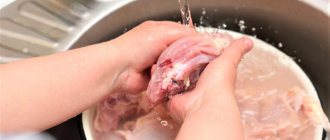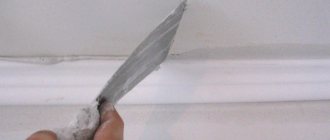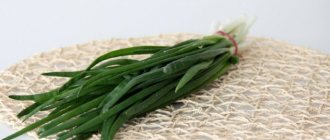Over time, dirty spots appear on the ceiling and walls painted with water-based paint. This is especially noticeable in the kitchen, where food is often prepared. Many housewives are interested in how to wash a ceiling painted with water-based paint in the kitchen so that this process goes quickly and efficiently.
Washing a ceiling painted with water-based paint.
Ammonia for oil and alkyd enamel
On such a surface there is a durable and dense film that is resistant not only to moisture and water, but also to mechanical stress. Therefore, such walls can be safely washed, but it is not recommended to use soap, soda or washing powders for this.
An excellent remedy for oil and alkyd enamel is an aqueous solution of ammonia, which can be prepared at the rate of 1 tablespoon per 1 liter of warm water.
The process of washing walls is simple - you need to soak a sponge in a solution of ammonia and use it to rub the stained area.
If ammonia does not help, then you can try fresh potatoes, the tuber of which needs to be grated on a fine grater, after which the gruel is applied to a sponge and rubbed over the dirty area.
The advantage of ceilings painted with water-based emulsion
Ceilings and walls treated with water-based paint have several advantages:
- This coating does not contain harmful components and even when the temperature in the living room increases, it does not emit harmful toxins.
- The water-based solution is easy to apply to the prepared surface of walls and ceilings.
- The surface painted in this way is resistant to high humidity.
- This paint will cost less than suspended ceilings, but it looks no worse.
- With minimal skills, staining can be done independently, without involving workers.
- A wide palette of water-based paint allows you to choose the color and tone to suit any interior.
- This paint can be used on ceiling tiles and is also used on multi-level surfaces.
The coating is resistant to high humidity conditions.
In other rooms, painted surfaces do not need to be washed frequently. But in the kitchen, the walls and ceiling get dirty faster and require special care. When choosing a water-based composition, preference should be given to those types to which acrylic or silicone is added.
Soda for latex paints
Dirt from latex, acrylic and silicone coatings can be removed with almost any non-aggressive detergents. However, the real panacea is baking soda, which in the form of a paste can cope with even severe stains.
To clean more extensive stains, you can use a solution, for the preparation of which you will need:
- 3 l. clean water at room temperature;
- 100 gr. baking soda;
- 50 ml. ammonia.
Important! To protect the skin of your hands, be sure to use rubber gloves!
Preparing for general cleaning of ceilings
If you have started a general cleaning of the house, then before renewing the painted ceiling, it is recommended to remove dust on it using a vacuum cleaner. The brush head is pre-wrapped in a soft, dry cloth.
Means and materials for washing and cleaning the ceiling.
Gray carbon deposits above the stove and above the window frames are especially carefully removed. Then they get rid of the existing greasy stains and then proceed to wet cleaning the entire surface.
Old stubborn stains are removed carefully so as not to erase the paint layer.
If simple water-based paint was used for painting, it will be impossible to clean it from heavy contamination; it is better to repaint the surface again.
How to wash without streaks?
To prevent stains from remaining on the walls after washing, you must follow simple rules:
- If the product is new, test it on an inconspicuous area of the wall;
- First apply the products to the sponge/brush and only then to the wall;
- Prepare paper towels, napkins and toilet paper for blotting in advance;
- The process of washing walls always starts from the bottom;
- Any leaks that appear are immediately removed;
- Dirty liquid and foam are not reused.
By following the above recommendations, your walls will always be as good as new, and dirt stains will no longer cause headaches. You should also not forget about regular cleaning, because preventing a problem is easier than solving it.
Working with walls
Before washing walls painted with moisture-resistant water-based paint, you should try the selected detergent on a small area of the surface.
This procedure will ensure that the coating does not collapse after cleaning.
Painted walls are washed more often than ceilings, especially when there are small children in the house. To wash the walls, you can use liquid soap, dishwashing liquid or floor cleaner. It is difficult to remove traces from markers made with alcohol; a thin layer of paint is easily damaged by vigorous rubbing with a rag.
How to remove stains after washing on a ceiling painted with water-based paint?
Water-based painting creates a pleasant matte finish with excellent decorative characteristics. Certain types of paint are susceptible to exposure to water; only dry cleaning is suitable for them. How to wipe dust off a ceiling painted with water-based paint? You can use special wipes or a slightly damp soft cloth. In living rooms this is not a problem. There, except specks of dust, nothing disturbs the cleanliness.
In the kitchen, no matter how you ventilate, no matter what miracle hood you install, yellow fat deposits or black soot are not easy to avoid. We have to clean the ceiling from soot and grease and renew it. An eternal problem when washing dirty ceilings is the resulting drips and stains. In order not to spoil the overall picture, it is important to know what is the best way to wash a ceiling painted with water-based paint so that there are no streaks?
Any household chemicals store has a huge selection of special cleaning products for easy cleaning. To avoid inadvertently damaging the fragile ceiling covering, you should free your hands from decorations. When preparing the solution, thoroughly mix the composition until all solid particles are completely dissolved. This will help avoid scratches. Avoid applying household chemicals directly to the ceiling covering. Otherwise it will have to be changed. First, the fabric is soaked in a thoroughly diluted solution. And only then the coating is wiped off. Don't forget to wring out the napkin thoroughly. An overly wet cloth may leave streaks.
Detergents
The first and main requirement is that even with severe stains, no bleaching agents. They give stripes with light areas on the surface. Strongly alkaline solutions with high pH are also unacceptable.
There is simply no point in using caustic toxic products with the addition of aggressive components. Greasy or highly visible stains can only be removed with their help together with paint. As a result, the surface will have to be whitened.
For washing, use liquid detergents or regular soap, without fragrances. It is rubbed with shavings and beaten in warm water until foamy. But even a weakly alkaline washing solution should not be too concentrated.
Main types of paint
There are a number of dyes, each of which has certain advantages and disadvantages. Experts advise choosing formulations that can easily withstand washing. Thanks to this, it will be possible to maintain the cleanliness of the coatings and avoid constant repairs.
Silicate
This type of coating is considered the most resistant to moisture. In addition to the silicate base, the substances contain pigments and liquid glass. However, you should not use such compositions for painting bedrooms. An excellent solution for using silicate paint would be a bathroom. It is also allowed to apply it in other utility rooms and carry out external treatment.
Latex
These compositions fit perfectly on all types of bases and are easy to clean. The only disadvantage is the high cost, since this is an elite market segment.
Acrylic
This is one of the most popular coating options. This dye contains resins. They have a binding effect and make the paint more elastic. Some substances are characterized by resistance to moisture because they include a latex component.
Acrylic dyes are easily distributed over the surface and are durable. They usually have a pastel color scheme. To obtain a more saturated shade, special additives are added to the composition. Tinting is done in a store or at home.
Silicone
These coatings are based on silicone resins. They also include acrylic copolymers. The products protect surfaces from fungal microorganisms and mold. The compositions are characterized by vapor-proof properties.
Equipment for washing ceilings painted with water-based paint
First of all, you need to figure out how to clean a ceiling painted with water-based paint. Recommended equipment:
- For this type of work it is convenient to use a stepladder;
- A vacuum cleaner or brush is required;
- Telescopic mop (a regular mop will do);
- Detergent composition;
- Bucket of water;
- Soft, non-fading rag;
- Foam sponge;
- An apron with convenient pockets will come in handy;
- It is worth using a scarf, glasses and gloves.
Everything is in order
First, you can try removing the gray deposits with a vacuum cleaner. An ash-gray coating always forms in areas above the kitchen stove or above windows. If it is not cleaned, it will become larger and more noticeable. Even though cleaning ceilings is quite a boring task, it is necessary to clean them regularly to prevent dirt from becoming habitual.
If you have not paid attention to the grease deposits above the stove for a long time, then forget about the uniform color of the ceiling - it is very difficult to get rid of this dirt without damaging the emulsion layer. Due to the ease of application and use, it is also easy to damage.
What is recommended to use for washing
Before cleaning a painted ceiling, you should decide what kind of dye it was coated with. The easiest way is to wash the ceiling with ordinary water. This can be done with a rag. A soft sponge is also suitable for this. This technique helps remove dirt and dust from the surface. It can be used in premises for various purposes.
It is worth considering that it will not be possible to remove grease and soot from the kitchen ceiling with ordinary water. In addition, before washing the painted surface, it is recommended to take into account that not all types of water-based paint can withstand strong friction. It will not be possible to remove greasy stains from a surface painted with the usual type of water-based paint without adding silicone or acrylic particles. Such dirt gets into the deep layers of paint. In this situation, you will have to completely update the ceiling.
What products can be used to clean water-based coatings?
Before washing the ceiling, you need to find out what kind of paint is used in the decoration: the answer to this question will be a product that can wash off stains and soot, because most often ceilings in kitchens and sanitary rooms are painted with water-based emulsion. Silicone and latex VE-compositions can be washed with heated water with the addition of detergent, but mineral and acrylic emulsions will require complete repainting.
ATTENTION! Do not use abrasive compounds, aggressive or chemically active substances for cleaning - you will get scratches and uneven color.
Which tool to choose
When painting, use a brush or roller. So that you can do the work yourself, standing directly on the floor and not having to climb on a stepladder, you can use a telescopic tube. In order for the roller to absorb the paint uniformly, you need to take a special tray. In addition, the bath will prevent excess dirt from spreading.
You should not choose a large brush. After all, as a rule, a brush is used only for layering corners. The best option for this is a thin flute brush with a width of five to ten centimeters. The roller should be chosen more carefully. A medium-pile roller is best suited for this purpose. Its width should be from 18 to 25 centimeters. You should not buy a roller with a foam attachment; it will fail very soon.
Surface preparation
Before you start cleaning, you should make sure that the moistened walls dry quickly: there is no excessive humidity inside the apartment or house, and it is warm enough. Otherwise, stains may subsequently form, dampness and mold may appear. Preparatory work should be carried out in the following sequence:
- Prepare your workspace. It is necessary to remove photographs, pictures, and other decorative elements from the walls. The released hooks must be marked with pieces of bright material so that during the process of washing the base you do not get hurt on them. It is advisable to move the furniture to the central part of the room: there it will not interfere with free movement.
- Protect the flooring from moisture. It is necessary to lay film or thick fabric around the perimeter of the room (along the baseboards). They will prevent dirty water from getting onto the floor. In addition, you can cover furniture items.
- Remove dust from the walls. Dry cleaning is best done with a vacuum cleaner (at low speed) using a flat attachment.
You can quickly remove dust from the surface of the walls using a mop with a clean rag on it Source images.squarespace-cdn.com
When emulsion and emulsion are different
For the production of water-based paints, several polymers with different properties are used. The most popular among them are:
- Silicate - forms a coating that allows the walls to “breathe”, but is not moisture-proof. Only wiping with a well-wrung out sponge or cloth is allowed.
- Latex has excellent steam permeability while retaining water. It can be washed without fear of disturbing the structure of the paint.
- Acrylic has better properties than silicate, but is in many ways inferior to latex. If exposure to moisture is short, it is quite capable of withstanding washing.
- Silicone is the best polymer today, which is not at all afraid of contact with water and is suitable for frequent washing.
Washing walls depending on the coating
If during renovation you decide to paint the walls, then in the future it is better to try not to bring the coating to a critical state so that you don’t have to wash it. Moreover, this is problematic to do with water-based paints. Make it a habit to carefully brush away dirt if you notice it. You can use wet wipes. Or use a special product marked “suitable for walls.” This will protect you from property damage.
Sometimes you can do without washing the walls. All you have to do is sprinkle starch onto the oil stain, let it sit for two hours, and then just brush it off. The drops, especially if they are fresh, will be absorbed and will not need to be washed off.
If your apartment has a combined kitchen and living room, do not forget to turn on the hood. Evaporation after frying or boiling tends to settle on the walls.
If you still need general cleaning of the walls, choose the right washing method. It will depend on what type of paint was used to cover the walls.
Latex paint
This coating can be wiped with a sponge and a cleaner that does not have abrasive particles. Some minor stains can be washed off with plain water.
If the dirt is ingrained, for example, greasy fingerprints or drops, then a mixture of soda and water or a vinegar solution will help. You need to bring the soda to the consistency of thick sour cream, and then wipe the desired area. As a last resort, you can use alcohol (for the most difficult stains).
Water-based paint
How to wash walls painted with water-based paint? This is a really difficult question because there is a risk of leaving divorces. Most often, dry cleaning is preferred. Just don't overdo it with friction - it can have a bad effect.
If wet cleaning is still necessary, then arm yourself with a soft sponge and a weak soap solution. Don't add too much water. All actions must be as careful as possible.
Water-dispersible acrylic or silicone coatings
By adding acrylic or silicone, the paint becomes more resistant to water, so cleaning such walls is much easier. If possible, then during repairs you should pay attention to this type of paint and paint the walls with it, and not with water-based paint.
For washing, you can use almost any cleaner (except for aggressive agents). It could even be soap or dishwashing gel. However, friction is also best avoided.
Oil or alkyd paint
It will be much easier to clean painted walls if you choose oil- or alkyd-based paint during renovation. Such compositions are very resistant to mechanical damage, so they can be rubbed. But it’s better not to use soda and soap. As a cleaner, use a solution of ammonia (1 spoon) diluted in a liter of water. It will cope perfectly with any dirt and will not damage the coating.
You can squeeze a little shaving foam onto the stain. It will take about three hours for it to absorb and do its job, but if you're in no hurry, this option is great. You can remove the foam with a damp sponge.
How to properly wash a ceiling painted with water-based paint: step-by-step instructions
- Sometimes simply vacuuming surfaces is enough to achieve results. In any case, this is a good place to start.
- Before washing a ceiling painted with water-based paint with your own hands using special means, you should perform a “dry wash”. You will need a special mop. In the absence of one, you can arm yourself with a piece of soft cloth.
- When the above manipulations are not enough, heavy artillery is used: a solution for wet cleaning is prepared.
- Treat the ceiling with light, smooth movements using a well-wrung cloth. Rub without fanaticism. Perhaps once will not be enough and the procedure will have to be repeated.
- Wipe the surface dry. It's easy to see that the process is simple. Although sometimes you have to work hard to achieve results.
Safety precautions
When carrying out cleaning procedures, it is recommended to place the ladder as securely as possible. You should not install all kinds of pads under the legs if the floor is uneven. You cannot stretch while standing on a ladder in an attempt to cover the maximum area of the ceiling. In such a situation, it is recommended to get off and move the stepladder. Otherwise, there is a high risk of falling and serious injury.
Particular care is recommended when moving stairs if the floor is made of smooth tiles.
When wet cleaning the ceiling, water will fall onto the floor. On such a surface, the housewife may slip or the stepladder may move out of place.
See also
How to make washing gel and washing powder at home
The container for the soap solution must be of such size and shape that it is securely fixed on the landing of the stairs. It is recommended to wear an apron over your clothing. It should have roomy pockets. You can put a rag or sponge in them at each stage of cleansing. It often becomes necessary to wipe the ceiling with a dry cloth after cleaning with a damp sponge. In this case, the sponge can be placed in the apron pocket. Moreover, most likely, there is no place on the stairs for it. In addition, the sponge may fall, which means that you will have to go down to get it.
Tools you can't do without
Even before you start cleaning, you need to prepare the following set:
- two buckets or basins, one of which is intended for clean water, and the second for soap solution.
- a soft and clean rag (if the walls are painted white or beige, then the fabric should have a similar color);
- several brushes with low-stiffness bristles - they will be needed to remove stains;
- stepladder (without it it will be difficult to wash the ceiling).
Also, do not forget about personal protective equipment. Getting detergents into your eyes is just as unpleasant as clogging your mucous membranes with dust.











